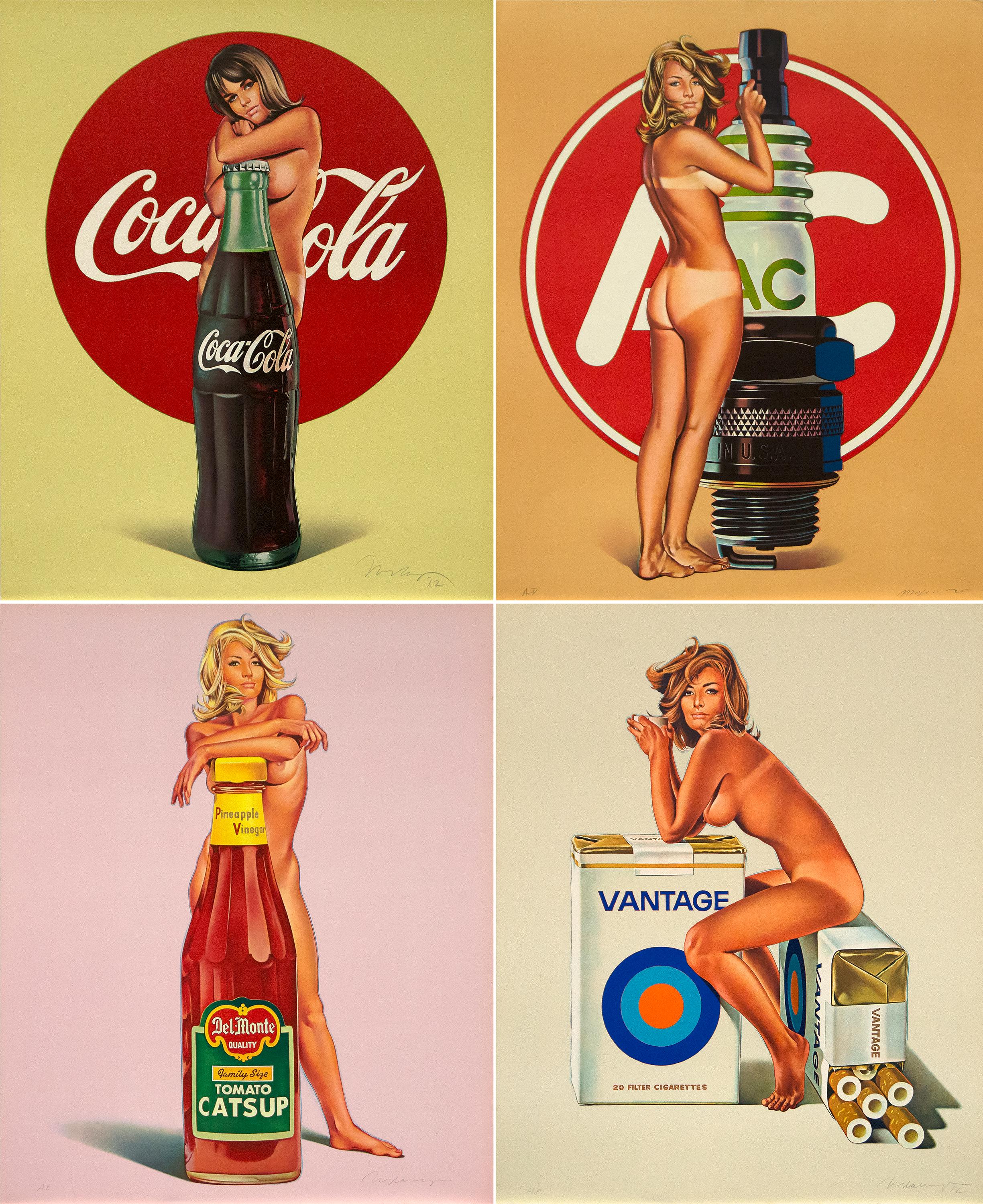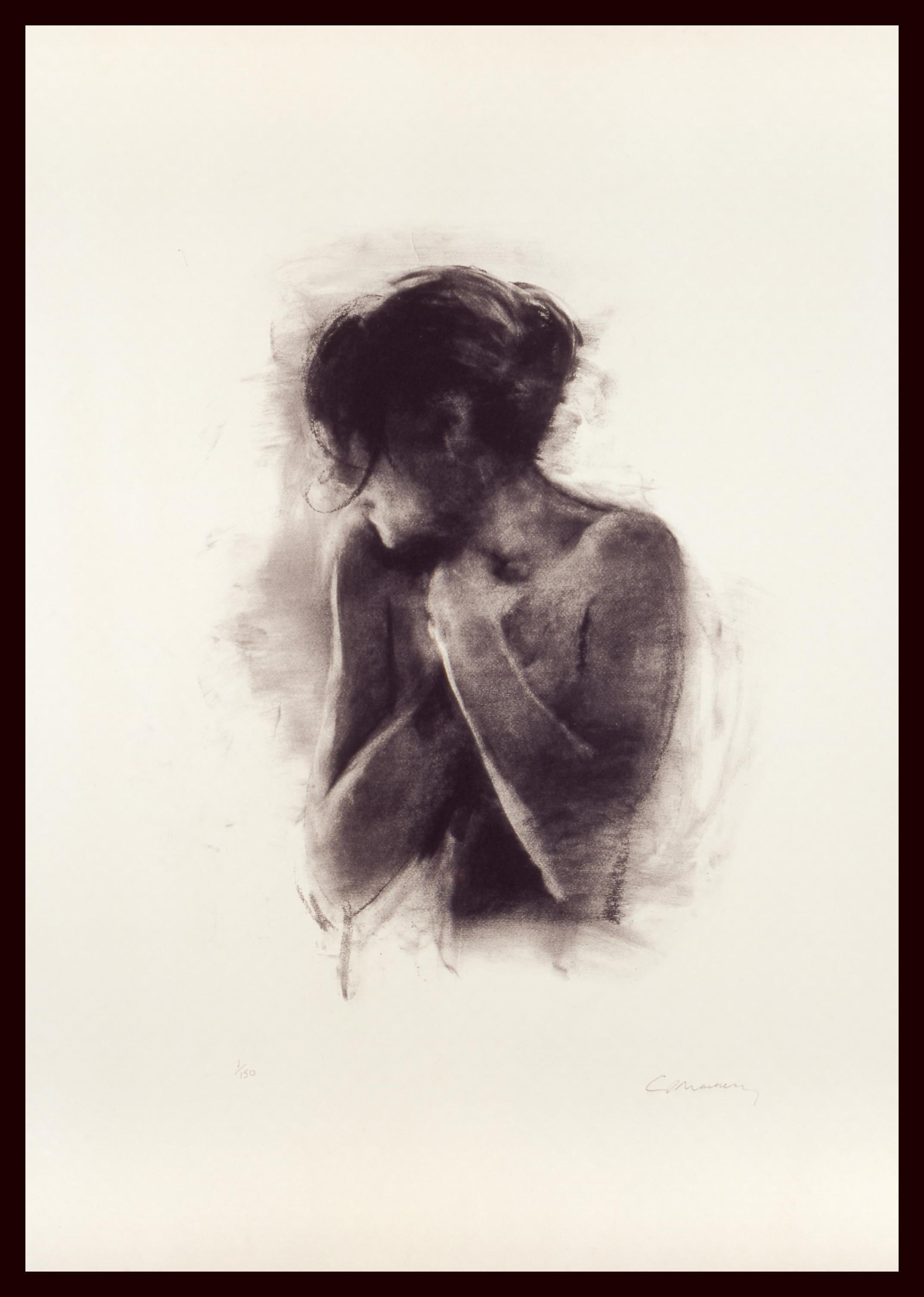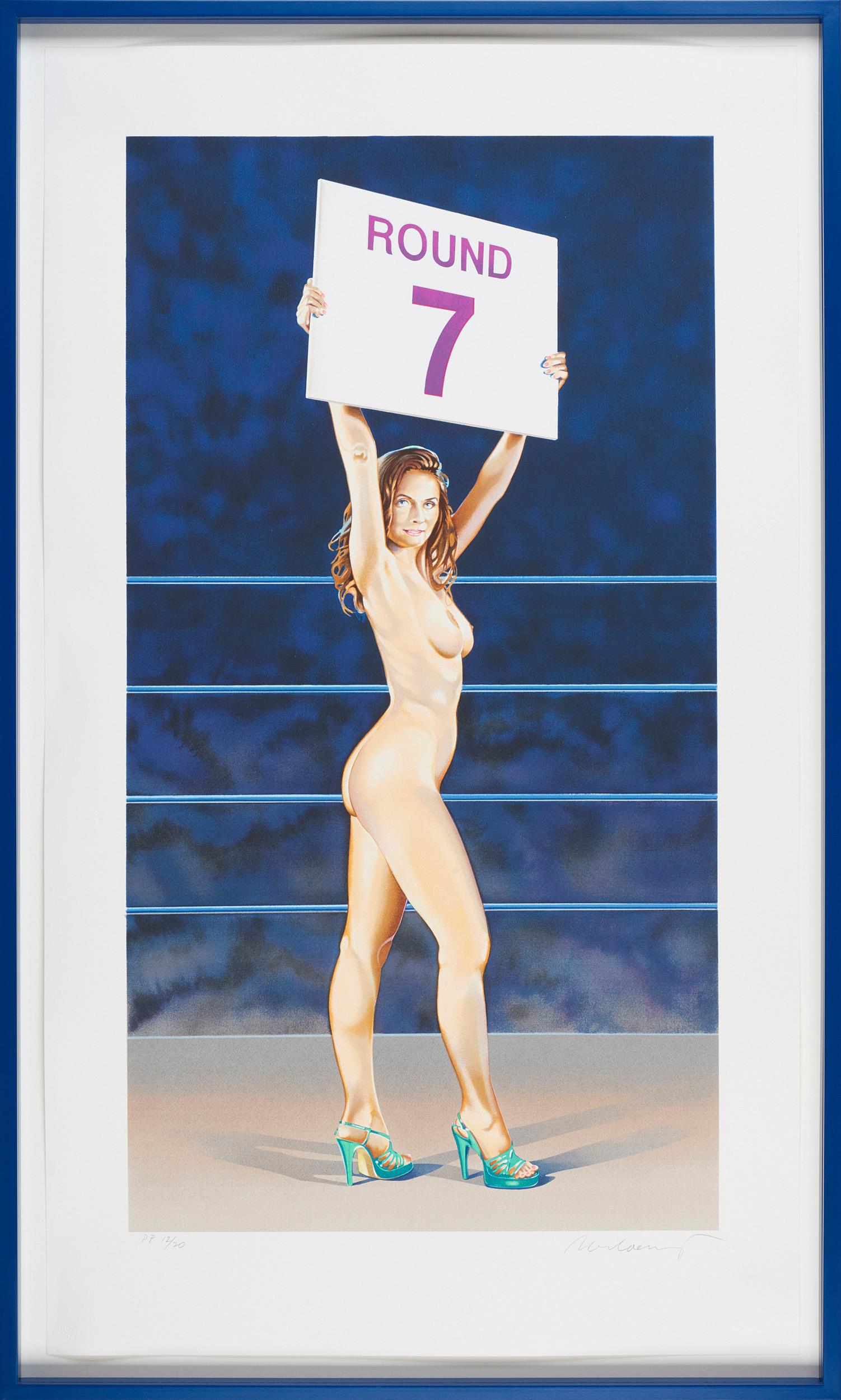Items Similar to after Niccolo dell'Abbate - Lithographic Reproduction
Want more images or videos?
Request additional images or videos from the seller
1 of 4
Niccolo dell'Abbateafter Niccolo dell'Abbate - Lithographic Reproduction
About the Item
after Niccolo dell'Abbate - Lithographic Reproduction
Dimensions: 32 x 24 cm
Revue Art de France
Niccolò dell'Abate was the third of the Italian founders of the so-called school of Fontainebleau. These painters were employed in the decoration of the Château of Fontainebleau, the main country residence of the kings of France in the 16th century. At Fontainebleau Niccolò was chiefly occupied painting fresco decorations, under the supervision of Primaticcio. He also executed independent landscapes, such as 'The Death of Eurydice' in the Collection.
Niccolò dell'Abate was born in Modena, and worked there and in Bologna from 1547/8. His earlier works, notably fresco in Modena and Bologna, shows the influence of Parmigianino. He left for France in 1552, where he worked chiefly at Fontainebleau in conjunction with the leading painter at the court, Francesco Primaticcio (1504/5-70), who had earlier collaborated with Rosso Fiorentino.Their form of courtly Mannerism was one of the main influences on the Mannerist painters of northern Europe, such as Wtewael.
- Creator:
- Dimensions:Height: 12.6 in (32 cm)Width: 9.45 in (24 cm)Depth: 0.04 in (1 mm)
- Medium:
- Period:
- Condition:
- Gallery Location:Collonge Bellerive, Geneve, CH
- Reference Number:1stDibs: LU16122171133
About the Seller
4.9
Gold Seller
These expertly vetted sellers are highly rated and consistently exceed customer expectations.
Established in 2015
1stDibs seller since 2015
908 sales on 1stDibs
Typical response time: 2 hours
- ShippingRetrieving quote...Ships From: Collonge Bellerive, Geneve, Switzerland
- Return PolicyA return for this item may be initiated within 7 days of delivery.
More From This SellerView All
- Leonor Fini - Original LithographBy Leonor FiniLocated in Collonge Bellerive, Geneve, CHLeonor Fini - Original Lithograph The Flowers of Evil 1964 Conditions: excellent Edition: 500 Dimensions: 46 x 34 cm Editions: Le Cercle du Livre Précieux, Paris Unsigned and unumb...Category
1960s Modern Nude Prints
MaterialsLithograph
- Marc Chagall - Moses with Tablets of Stone - Original LithographBy Marc ChagallLocated in Collonge Bellerive, Geneve, CHMarc Chagall, Original Lithograph depicting an instant of the Bible. Technique: Original lithograph in colours Year: 1956 Sizes: 35,5 x 26 cm / 14" x 10.2" (sheet) Published by: Éditions de la Revue Verve, Tériade, Paris Printed by: Atelier Mourlot, Paris Documentation / References: Mourlot, F., Chagall Lithograph [II] 1957-1962, A. Sauret, Monte Carlo 1963, nos. 234 and 257 Marc Chagall (born in 1887) Marc Chagall was born in Belarus in 1887 and developed an early interest in art. After studying painting, in 1907 he left Russia for Paris, where he lived in an artist colony on the city’s outskirts. Fusing his own personal, dreamlike imagery with hints of the fauvism and cubism popular in France at the time, Chagall created his most lasting work—including I and the Village (1911)—some of which would be featured in the Salon des Indépendants exhibitions. After returning to Vitebsk for a visit in 1914, the outbreak of WWI trapped Chagall in Russia. He returned to France in 1923 but was forced to flee the country and Nazi persecution during WWII. Finding asylum in the U.S., Chagall became involved in set and costume design before returning to France in 1948. In his later years, he experimented with new art forms and was commissioned to produce numerous large-scale works. Chagall died in St.-Paul-de-Vence in 1985. The Village Marc Chagall was born in a small Hassidic community on the outskirts of Vitebsk, Belarus, on July 7, 1887. His father was a fishmonger, and his mother ran a small sundries shop in the village. As a child, Chagall attended the Jewish elementary school, where he studied Hebrew and the Bible, before later attending the Russian public school. He began to learn the fundamentals of drawing during this time, but perhaps more importantly, he absorbed the world around him, storing away the imagery and themes that would feature largely in most of his later work. At age 19 Chagall enrolled at a private, all-Jewish art school and began his formal education in painting, studying briefly with portrait artist Yehuda Pen. However, he left the school after several months, moving to St. Petersburg in 1907 to study at the Imperial Society for the Protection of Fine Arts. The following year, he enrolled at the Svanseva School, studying with set designer Léon Bakst, whose work had been featured in Sergei Diaghilev's Ballets Russes. This early experience would prove important to Chagall’s later career as well. Despite this formal instruction, and the widespread popularity of realism in Russia at the time, Chagall was already establishing his own personal style, which featured a more dreamlike unreality and the people, places and imagery that were close to his heart. Some examples from this period are his Window Vitebsk (1908) and My Fianceé with Black Gloves (1909), which pictured Bella Rosenfeld, to whom he had recently become engaged. The Beehive Despite his romance with Bella, in 1911 an allowance from Russian parliament member and art patron Maxim Binaver enabled Chagall to move to Paris, France. After settling briefly in the Montparnasse neighborhood, Chagall moved further afield to an artist colony known as La Ruche (“The Beehive”), where he began to work side by side with abstract painters such as Amedeo Modigliani and Fernand Léger as well as the avant-garde poet Guillaume Apollinaire. At their urging, and under the influence of the wildly popular fauvism and cubism, Chagall lightened his palette and pushed his style ever further from reality. I and the Village (1911) and Homage to Apollinaire (1912) are among his early Parisian works, widely considered to be his most successful and representative period. Though his work stood stylistically apart from his cubist contemporaries, from 1912 to 1914 Chagall exhibited several paintings at the annual Salon des Indépendants exhibition, where works by the likes of Juan Gris, Marcel Duchamp and Robert Delaunay were causing a stir in the Paris art world. Chagall’s popularity began to spread beyond La Ruche, and in May 1914 he traveled to Berlin to help organize his first solo exhibition, at Der Sturm Gallery. Chagall remained in the city until the highly acclaimed show opened that June. He then returned to Vitebsk, unaware of the fateful events to come. War, Peace and Revolution In August 1914 the outbreak of World War I precluded Chagall’s plans to return to Paris. The conflict did little to stem the flow of his creative output, however, instead merely giving him direct access to the childhood scenes so essential to his work, as seen in paintings such as Jew in Green (1914) and Over Vitebsk (1914). His paintings from this period also occasionally featured images of the war’s impact on the region, as with Wounded Soldier (1914) and Marching (1915). But despite the hardships of life during wartime, this would also prove to be a joyful period for Chagall. In July 1915 he married Bella, and she gave birth to a daughter, Ida, the following year. Their appearance in works such as Birthday (1915), Bella and Ida by the Window (1917) and several of his “Lovers” paintings give a glimpse of the island of domestic bliss that was Chagall’s amidst the chaos. To avoid military service and stay with his new family, Chagall took a position as a clerk in the Ministry of War Economy in St. Petersburg. While there he began work on his autobiography and also immersed himself in the local art scene, befriending novelist Boris Pasternak, among others. He also exhibited his work in the city and soon gained considerable recognition. That notoriety would prove important in the aftermath of the 1917 Russian Revolution when he was appointed as the Commissar of Fine Arts in Vitebsk. In his new post, Chagall undertook various projects in the region, including the 1919 founding of the Academy of the Arts. Despite these endeavors, differences among his colleagues eventually disillusioned Chagall. In 1920 he relinquished his position and moved his family to Moscow, the post-revolution capital of Russia. In Moscow, Chagall was soon commissioned to create sets and costumes for various productions at the Moscow State Yiddish...Category
1950s Modern Figurative Prints
MaterialsLithograph
- after Henri Matisse - AcrobatBy Henri MatisseLocated in Collonge Bellerive, Geneve, CHafter Henri Matisse - Acrobat Edition of 200 with the printed signature, as issued 76 x 56 With stamp of the Succession Matisse References : Artvalue - Succession MatisseCategory
1950s Modern Nude Prints
MaterialsLithograph
- Leonor Fini - Road to Death - Original LithographBy Leonor FiniLocated in Collonge Bellerive, Geneve, CHLeonor Fini - Road to Death - Original Lithograph The Flowers of Evil 1964 Conditions: excellent Edition: 500 Dimensions: 46 x 34 cm Editions: Le Cercle du Livre Précieux, Paris Un...Category
1960s Modern Nude Prints
MaterialsLithograph
- Jean Cocteau - Under the Fire Coat - Original LithographBy Jean CocteauLocated in Collonge Bellerive, Geneve, CHJean Cocteau - Under the Fire Coat - Original Lithograph Signed "Jean" in the plate and dated 1954 in the plate. Joseph Forêt Editions Dimensions: 41 x 33 cm...Category
1950s Surrealist Nude Prints
MaterialsLithograph
- Salvador Dali - Dawn - Original LithographBy Salvador DalíLocated in Collonge Bellerive, Geneve, CHSalvador Dali - Dawn - Original Lithograph Joseph FORET, Paris, 1957 PRINTER : Guillard SIGNATURE : plate signed by Dali. LIMITED : 233 copies. SIZE : 41 x 33 cm REFERENCES : Fiel...Category
1950s Surrealist Figurative Prints
MaterialsLithograph
You May Also Like
- Odalisque à la culotte de satin rougeBy Henri MatisseLocated in London, GBHenri Matisse Odalisque à la culotte de satin rouge 1925 Lithograph on Chine paper, Edition of 50 Paper size: 28.5 x 36.5 cms (11 1/4 x 14 3/8 ins) Image size: 19 x 27 cms (7 1/2 x 1...Category
1920s Modern Nude Prints
MaterialsLithograph
- Tomato Catsup, A.C. Annie, Lola Cola, Tobacco RedBy Mel RamosLocated in Palm Desert, CAFour prints by Mel Ramos. “Tomato Catsup, A.C. Annie, Lola Cola,” and “Tobacco Red” are pop art, offset lithographs in a palette of yellows, orange, and pink by the playful Mel Ramos. The artwork is signed in pencil in the lower right of each print, “Mel Ramos 72.” Framed dimensions are 37 x 31 5/8 x 1 7/8 inches each. Mel Ramos is a California based Pop artist best known for his paintings of superheroes and female nudes, including Marilyn Monroe and Scarlet Johansson, with pop culture imagery. Many of his subjects emerge from Chiquita bananas...Category
1970s Pop Art Figurative Prints
MaterialsLithograph
- Torse à l'aiguièreBy Henri MatisseLocated in London, GBHenri Matisse Torse à l’aiguière 1927 Lithograph on Chine paper, Edition of 50 Paper size: 49.5 x 34.5 cms (19 1/2 x 13 1/2 ins) Image size: 36.4 x 26 cms (14 1/4 x 10 1/4 ins) HM15...Category
1920s Modern Figurative Prints
MaterialsLithograph
- Antonia - Limited Edition, Figurative, Contemporary, semi-nude, female, feminineBy Charlie MackesyLocated in Knowle Lane, CranleighAntonia is a limited edition lithograph, based on a black pastel drawing, by Charlie Mackesy. The edition is limited to 150 and have been signed by Mac...Category
Early 2000s Feminist Figurative Prints
MaterialsLithograph
- Girl on Gold - Limited Edition, Figurative, Contemporary, semi-nude, feminineBy Charlie MackesyLocated in Knowle Lane, CranleighGirl on Gold is a limited edition lithograph, based on an oil painting by Charlie Mackesy. The edition is limited to 120 and have been signed by Mackesy in Pencil. The elegance and femininity depicted in this image captures a feminine nature and emits beauty in the human form and a warmth with its golden hues. "I am cautious to explain what I think the work is saying for fear of taking away from you something you have seen and I have not. I could conclude by saying that life is precious and faith is a journey and sometimes art can give a small glimpse of these moments seen, and unseen. I think GK...Category
2010s Other Art Style Figurative Prints
MaterialsLithograph
- The Rounder Pop Art Mel Ramos Nude Boxing Print Lithograph blueBy Mel RamosLocated in Zug, CHMEL RAMOS (1935-2018) The Rounder 1999 Lithograph 92.1 x 48.9 cm 36.26 x 19.25 inches Edition of 199 with HC 20 Edition HC 12/20 Signed and numbered in pencilCategory
20th Century Figurative Prints
MaterialsLithograph
Recently Viewed
View AllMore Ways To Browse
Century Reproductions
Reproduction French
Dell Vintage
School Of Fontainebleau
Vintage Fontainebleau
Kings Court
Blacklight Poster
Contemporary Man Made Stone Side Tables
Lee Miller Nude
Wayne Thiebaud Poster
Electro Magie
Waterlilies With Japanese Bridge
Chiquita Banana Vintage
Mel Ramos Havana
Ryan McGinness On Sale
Andy Warhol Poster Torso
Lasar Segall
Dali Nu





